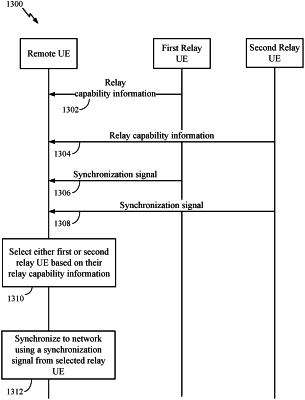| CPC H04W 56/001 (2013.01) [H04W 56/006 (2013.01); H04W 88/04 (2013.01); H04W 92/18 (2013.01)] | 28 Claims |

|
1. A method for wireless communication by a remote user equipment (UE), comprising:
receiving, in a radio resource control (RRC) message from a base station, a relay capability configuration comprising an indication to one of:
prioritize using relay capability information associated with multiple relay UEs over a synchronization priority associated with synchronization signals from the multiple relay UEs when selecting one relay UE of the multiple relay UEs; or
prioritize using a synchronization priority associated with synchronization signals from multiple relay UEs over relay capability information associated with the multiple relay UEs when selecting one relay UE of the multiple relay UEs;
receiving the synchronization signals from one or more of the multiple relay UEs, wherein each synchronization signal includes an indication of the synchronization priority corresponding to that received synchronization signal;
receiving the relay capability information from each of one or more relay UEs of the multiple relay UEs;
selecting the one relay UE of the multiple relay UEs based on the relay capability configuration and at least one of the synchronization priority or relay capability; and
synchronizing to a network using at least one synchronization signal received from the selected one relay UE.
|